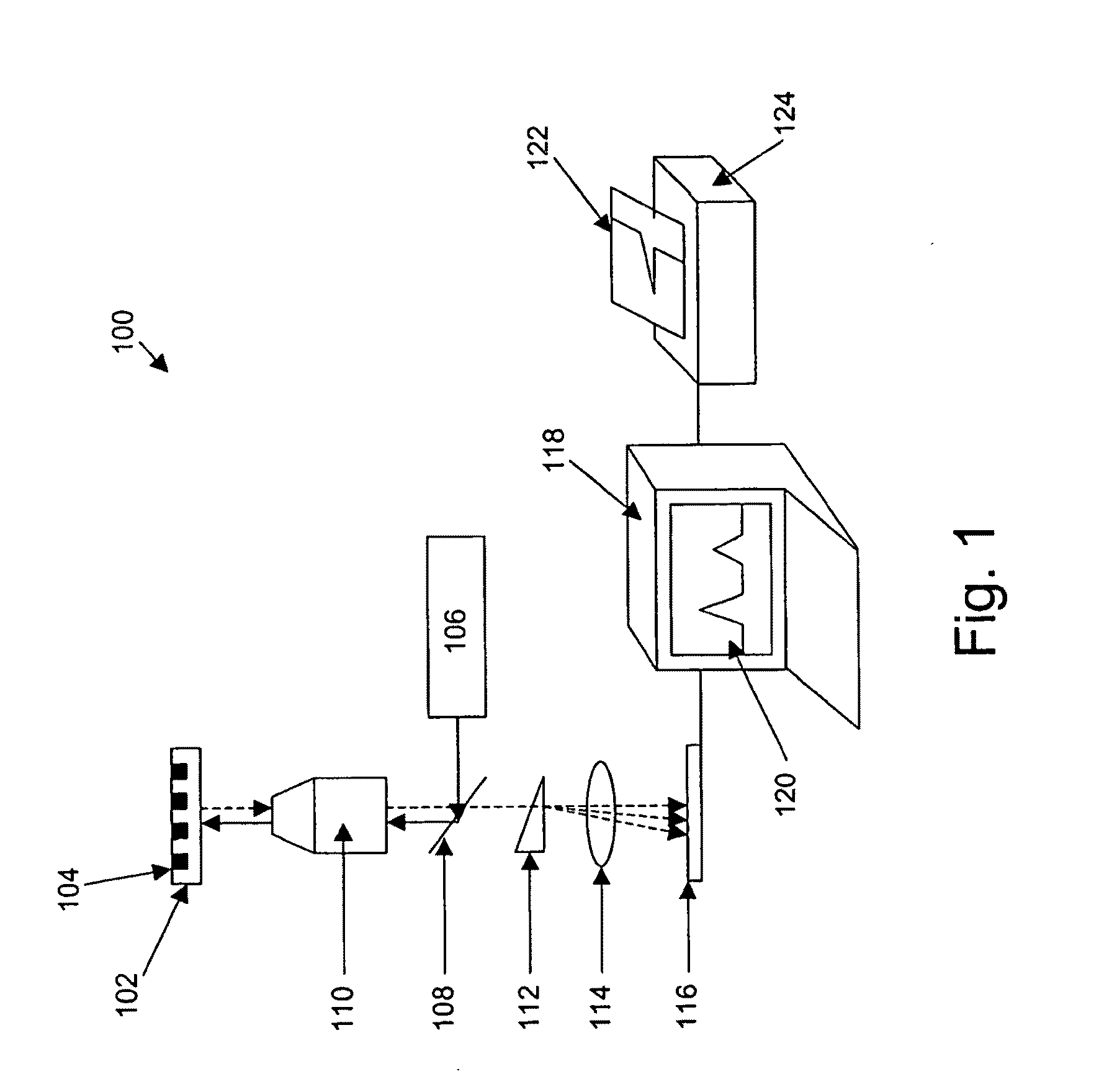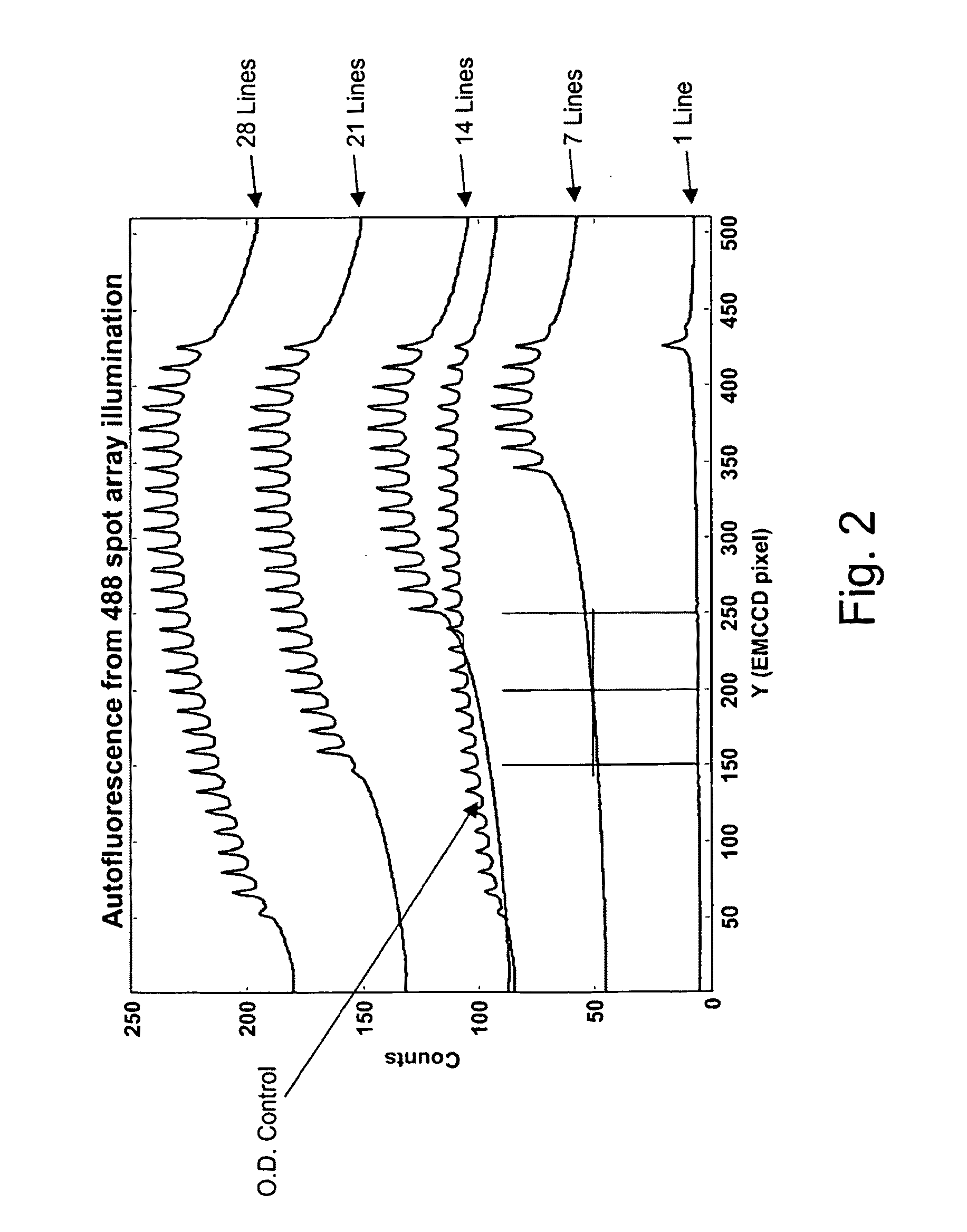Methods and systems for analyzing fluorescent materials with reduced autofluorescence
a technology of autofluorescence and fluorescent materials, applied in the field of reducing autofluorescence background noise, can solve the problems of increasing the difficulty of signal event identification, affecting the detection accuracy of fluorescent signals, and overwhelming relatively low reaction derived signals, so as to improve the ability to monitor fluorescent signals and reduce background signal nois
- Summary
- Abstract
- Description
- Claims
- Application Information
AI Technical Summary
Benefits of technology
Problems solved by technology
Method used
Image
Examples
Embodiment Construction
I. General Discussion of Invention
[0044]The present invention generally provides methods, processes and systems for monitoring fluorescent signals associated with reactions of interest, but in which background signal levels and particularly autofluorescence background noise of system components, is reduced.
[0045]The methods, processes and systems of the invention are particularly suited to the detection of fluorescent signals from signal sources, e.g., reaction regions, on substantially planar substrates, and particularly for detection of relatively low levels of fluorescent signals from such reaction regions, where signal background has a greater potential for negative impact.
[0046]Increasing throughput of chemical, biochemical and / or biological analyses has generally relied, at least in part, on the ability to multiplex the analysis. Accordingly, in a preferred embodiment, the methods, processes and systems of the invention can be used with multiplexed optical systems for high-thr...
PUM
 Login to View More
Login to View More Abstract
Description
Claims
Application Information
 Login to View More
Login to View More - R&D
- Intellectual Property
- Life Sciences
- Materials
- Tech Scout
- Unparalleled Data Quality
- Higher Quality Content
- 60% Fewer Hallucinations
Browse by: Latest US Patents, China's latest patents, Technical Efficacy Thesaurus, Application Domain, Technology Topic, Popular Technical Reports.
© 2025 PatSnap. All rights reserved.Legal|Privacy policy|Modern Slavery Act Transparency Statement|Sitemap|About US| Contact US: help@patsnap.com



